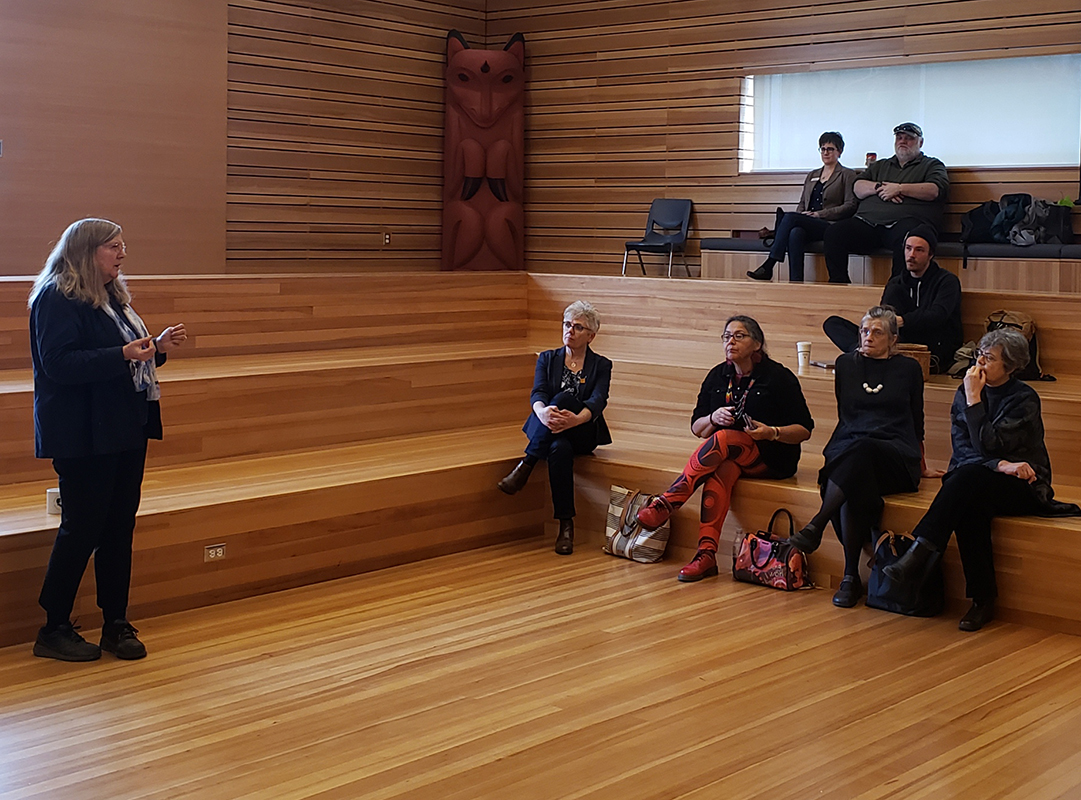On Feb. 28, Nancy Turner spoke to a group of elders, community members, and students at the Gathering Place (A1457) in Chilliwack on Indigenous resource management methods, and how traditional knowledge of plants and the environment is passed on.
Turner is an ethnobotanist and a ethnobiologist: she studies people’s knowledge and relationship with plants, and with the natural world. For 40 years she has worked with Indigenous people and communities in northwestern North America to study and record knowledge and traditions around plants and their environment.
She is an emeritus professor at the University of Victoria (UVIC) and has authored and co-authored numerous books, publications, book chapters, and peer-reviewed papers.
Turner began her talk with thanks, to both those who organized the event and all those who have contributed to her research and shared their knowledge with her. Her presentation strongly reflected the importance of the people in her work; many of her slides included the faces behind the information she was sharing with the group, and their names held as much weight as their knowledge in her stories.
Her area of study focuses west of the Rocky Mountains, from central Alaska to the Columbia River in the south. Over 50 unique languages were spoken in this area, bringing weight to the sheer volume of knowledge and tradition that were, and still are, present in such a diversity of communities.
Knowledge was shared through these communities through a variety of means, including trade, marriage, warfare, and hosting and feasting. The types of knowledge that were shared included fishing, hunting and food processing technologies, basketry techniques, stories, ceremonies, and phenological indicators.
Phenological indicators, in this context, refer to how one species can indicate what another species is doing. For example, sagebrush buttercup, also known as spring salmon run buttercup, blooms during the start of the first spring salmon run.
“People don’t need to go traipsing down to the bottom of the canyon to check whether the fish are coming; they can see [that] when the spring salmon run buttercup is blooming, they can go down and fish,” said Turner.
Another important type of knowledge that was shared was resource management. Indigeous people in the Northwest intentionally managed the land, cultivating plants, managing berry plots, and developing the ideal environment for food sources.
“Indigenous management systems have been conveniently overlooked for generations by newcomers,” Turner said. “People like James Douglas and others who came saw the beautiful landscapes and assumed they were natural.”
One method of management was through controlled burns. Certain plants are productive after a burn, such as trailing blackberry, nodding onion, and huckleberry.
Berry bushes were intentionally cultivated and managed; elders, families, and communities would have ownership over certain shrubs or patches, and would only pick in certain areas. The shrubs would be pruned and cared for.
There were also areas where everything was cultivated and maintained. “I think there are more of these than any of us realize,” Turner said.
A recent archeological find indicates that the practice of intentional cultivation has been going on for thousands of years. In a site along the Fraser River Delta near Vancouver, a 3,800-year-old patch of tended wapato (Indian potato, or x???q????l?s in h?n?q??min??m?) was found with digging sticks. “That shows the antiquity of the kind of practices that people were using,” said Turner.
There were a number of agriculture students at the talk, and in closing Turner was asked if she has any advice for those going into the industry, who will be working with plants and the land.
“Think about those things you are raising, those things you are growing, those things you are caring for … as more than just things, but as beings,” Turner said.
“We have our responsibilities; they [plants and animals] give us so much. But in turn, we need to be grateful, and respectful, and appreciative, and generous, and loving.”
Image: The Cascade
Photo: Nancy Turner


